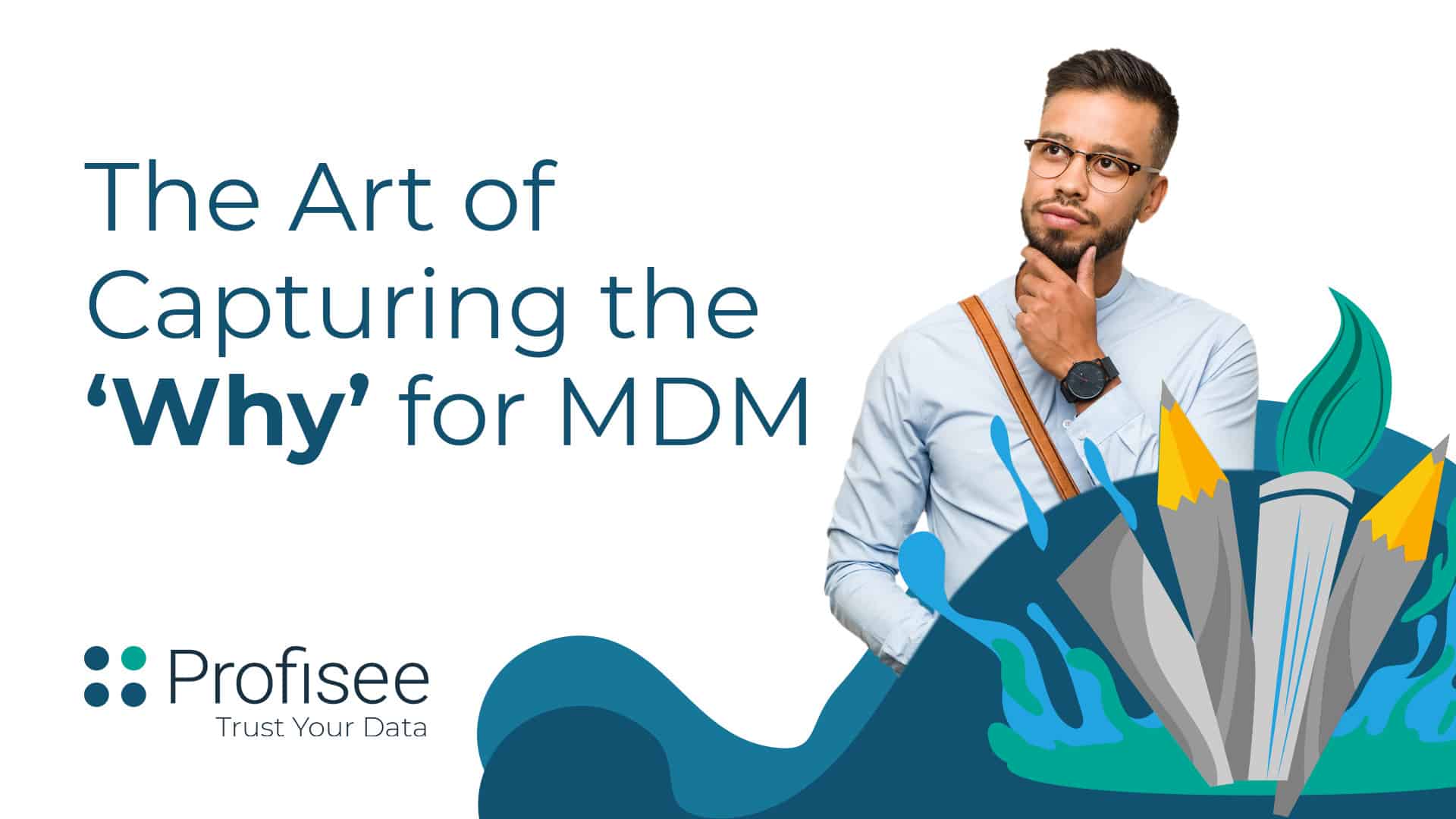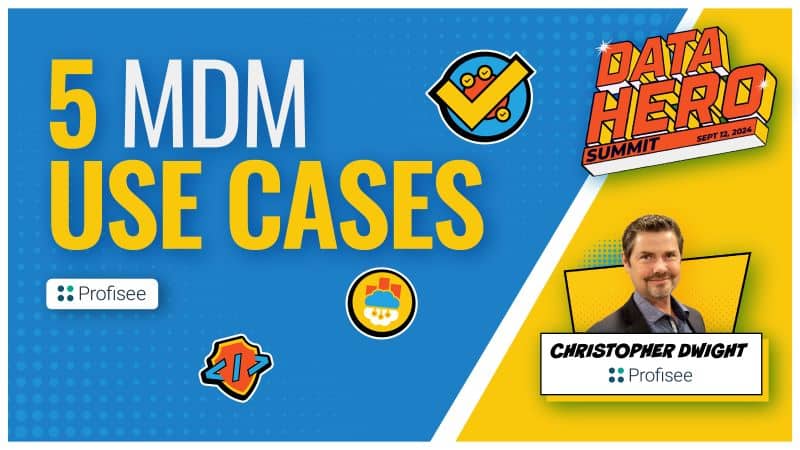If you want to succeed with MDM, you need to be problem-minded first, not solution-minded. At Profisee, we call it understanding the ‘Why’. If you don’t know the problem you are trying to solve or the opportunity you want to enable, how can you know if the solution you implement will work for your organization, or if the solution will even solve your problem (the one that you didn’t even know you had)? As the great philosopher Yogi Berra said, “if you don’t know where you are going, you’ll end up someplace else.”
By going through each of these steps, you can clearly define your ‘why’, and from there, you can begin the very important work of identifying use cases and solutioning.
1. Define Your Problem
The first step is to clearly define the problem you have, or the opportunity you want to enable. There are many methodologies for defining problems; Profisee recommends that you pick the one that works best for you.
For instance, Customer Service is bad because salespeople are not responding quickly is not a good problem statement. It might be true; Customer Service might indeed be bad and surveys might be showing a large deterioration in responses to questions around customer service related to salespeople, but a good problem statement requires more detail, a deeper level of analysis, and should not be so broad. A better problem statement would be something like The company is receiving bad customer experience ratings because our salespeople do not know which products and services their customers have bought to quickly respond to inquiries. Of course, there is a level of analysis, even root cause analysis, around why customer service is worsening. What we are trying to do here is link a business outcome to something tangible affecting the outcome. In this hypothetical example, it would be how salespeople are responding to customer questions. Of course, there could be other contributing factors like performance issues, or even some combination of a number of factors. If so, you need to understand how these variables affect the problem statement. In our example, we are going to assume that there is only one issue, and that personnel performance is not the issue.
2. Analyze The Root Cause
Closely related to the Define Problem step is analyzing the root cause. In this step, we want to understand what is causing the problem. Back to our hypothetical example, maybe salespeople do not have a 3600 view of customer, so they cannot easily see what products and services have been purchased by the customer. Therefore, the salesperson cannot easily and quickly respond to customer inquiries. As a result, Customer Service suffers. The goal here is to identify the primary cause of poor customer service. For the sake of our example, we will say that disparate customer data with quality issues affect how salespeople respond to inquiries.
3. Assess The Impact
Now, we understand the problem and root cause – salespeople cannot respond quickly to customer inquiries because they do not have all of the information about customers in one place or cannot trust that the data is correct. How big of a problem is this? Does it affect only one customer or all of the customers? Is it impacting revenue by limiting cross-sell opportunities, or even causing customers to leave? To justify an MDM investment, you don’t want to spend thousands and thousands of dollars if the problem is only costing hundreds of dollars. Scale and relative size of the impact are important. Prioritizing and focusing on use cases that will matter to the company are really important to developing a successful MDM program. By assessing the impact, you can calculate the size of the impact to the company. In this example, use cases around cleansing, connecting, unifying, enriching customer and product data could be the solution to the underlying problem.
Conclusion
Successful MDM solutions solve problems and create opportunities. World-class MDM platforms can deliver fast and robust benefits to the business – the problem solver just needs to know where to look. Thus, the art of capturing the ‘why’ is centered upon defining your problem. From there, you can build out your MDM solutions and program.

Value Management Consultant @ Profisee

Harbert Bernard
Harbert Bernard was the Global Value Consultant Lead at Profisee.











